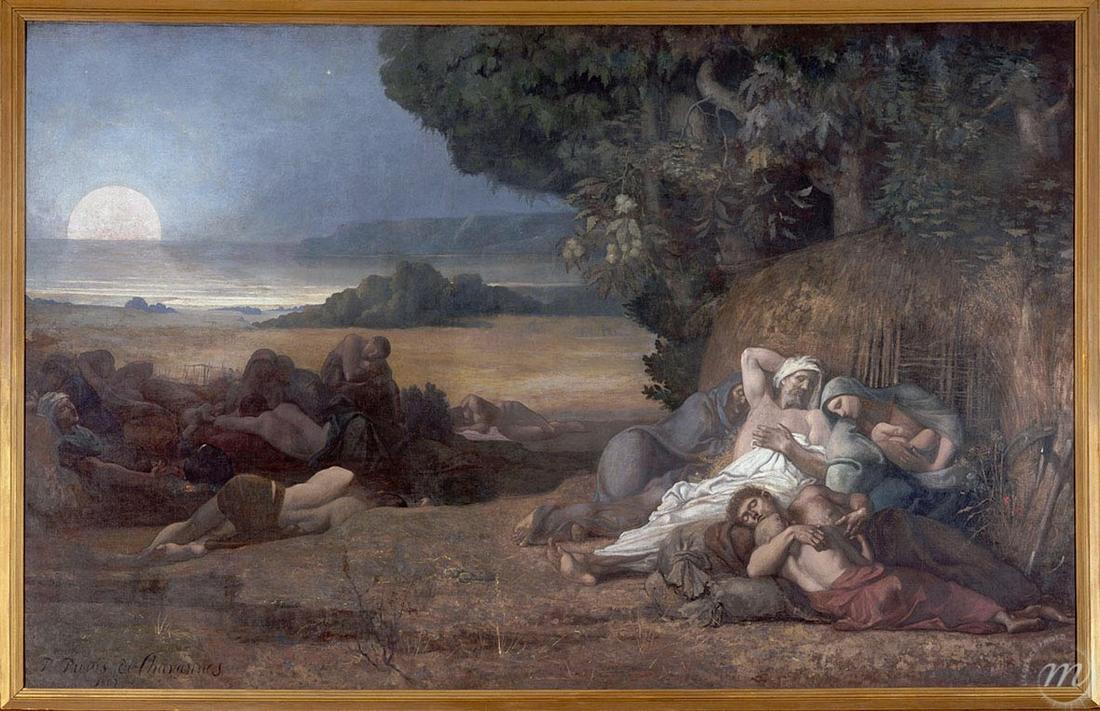The piece illustrates a line from the greatest masterpiece of Latin poetry, "The Aeneid", written by the poet Virgil between the year 29 and 19 BCE: "It was the hour when the first rest of weary mortals begins …". This referred to the episode during which the sleeping Trojans were taken by surprise by the famous wooden horse in their city. But here, Puvis de Chavannes has taken a few liberties with the tale: no direct allusion to this mythological story, but instead a rural setting and men who look like simple peasants at rest. It is a beautiful summer's night, bathed in the light of the stars and a full moon, after the harvest. The men are in communion with nature.
The painter's palette, made up of tones of beige, blue and pink, envelops the composition in a gentle torpor. The landscape has been created with a certain economy of means. The sky, ground and sea are worked in plain colours, like a wall fresco. The painting's construction is marked by horizontal lines, following the position of the bodies.
This piece is an important milestone in the history of 19th-century French art. It may be considered the first symbolist painting. It was also the artist's favourite painting.
Detail 1 : The woman with her face tilted to the right is reminiscent of Picasso's blue period.
Detail 2 : The Lille Palais des Beaux-Arts houses a painted sketch and various preparatory drawings for this work.

The piece illustrates a line from the greatest masterpiece of Latin poetry, "The Aeneid", written by the poet Virgil between the year 29 and 19 BCE: "It was the hour when the first rest of weary mortals begins …". This referred to the episode during which the sleeping Trojans were taken by surprise by the famous wooden horse in their city. But here, Puvis de Chavannes has taken a few liberties with the tale: no direct allusion to this mythological story, but instead a rural setting and men who look like simple peasants at rest. It is a beautiful summer's night, bathed in the light of the stars and a full moon, after the harvest. The men are in communion with nature.
The painter's palette, made up of tones of beige, blue and pink, envelops the composition in a gentle torpor. The landscape has been created with a certain economy of means. The sky, ground and sea are worked in plain colours, like a wall fresco. The painting's construction is marked by horizontal lines, following the position of the bodies.
This piece is an important milestone in the history of 19th-century French art. It may be considered the first symbolist painting. It was also the artist's favourite painting.
Detail 1 : The woman with her face tilted to the right is reminiscent of Picasso's blue period.
Detail 2 : The Lille Palais des Beaux-Arts houses a painted sketch and various preparatory drawings for this work.